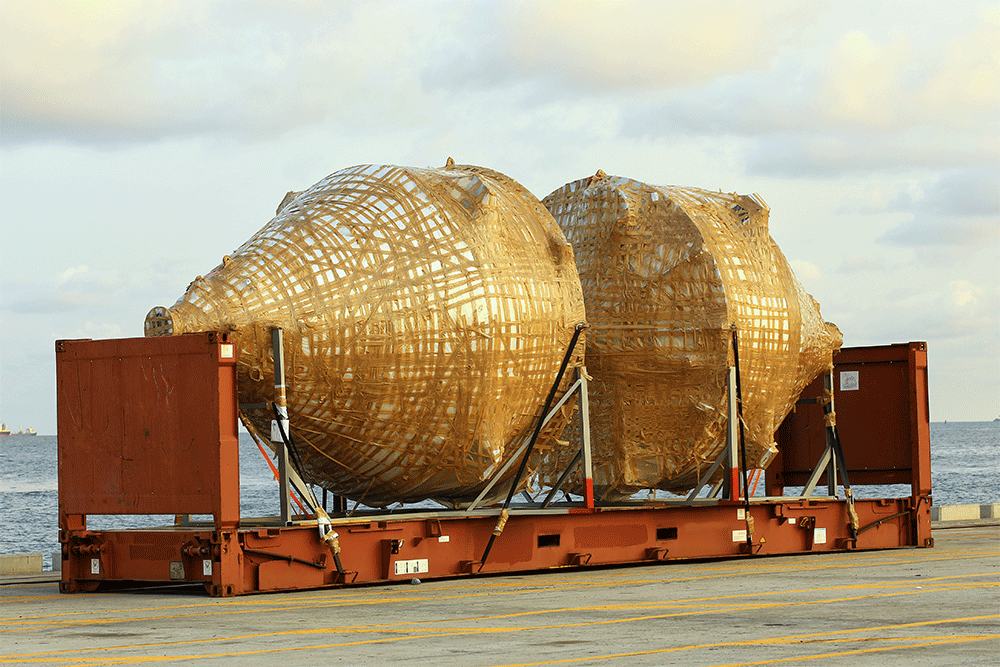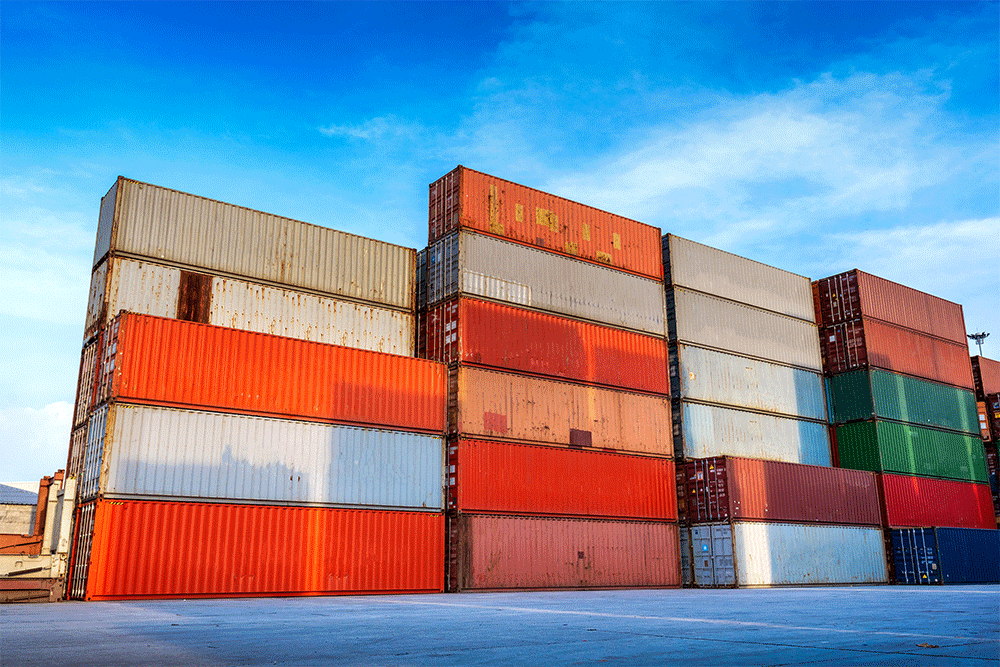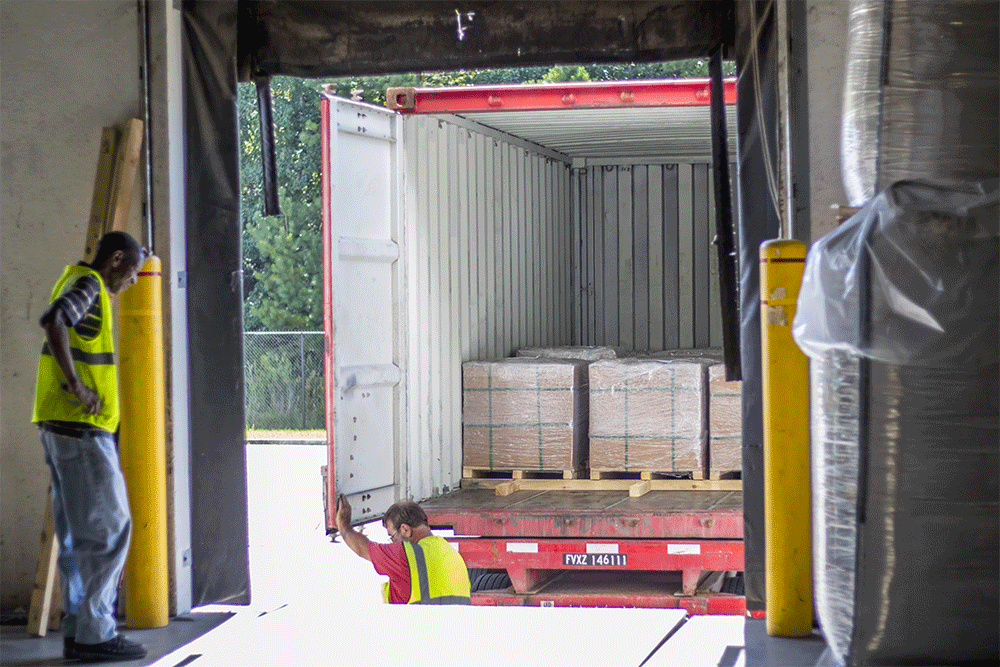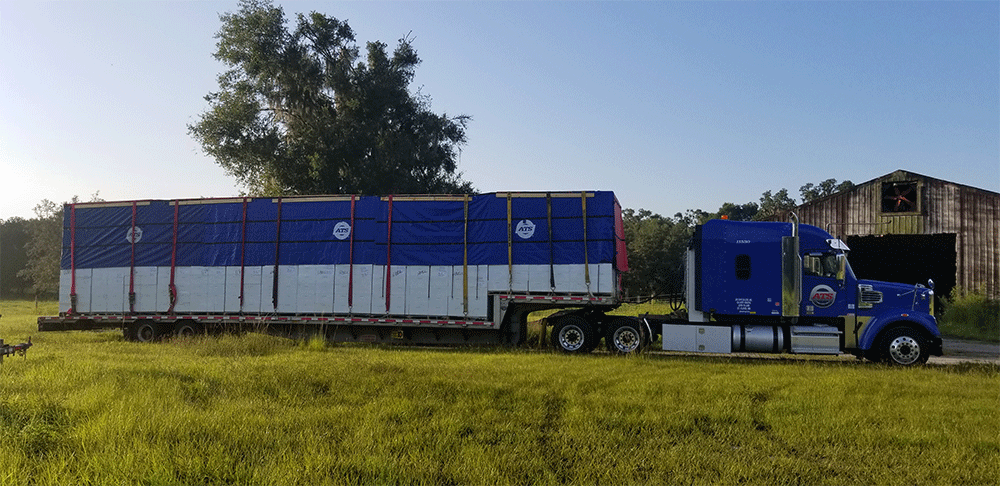You’ve spent years shipping your company’s inventories domestically and have a pretty good grasp on the trailer types to use for your products. Now, you’re being asked to ship internationally and it’s an entirely different animal.
Should your products go into a standard container or do you need a flatrack container? What’s the difference?
At one time, we were in a similar boat (no pun intended). Back in the early 1990s, after 35+ years of shipping domestically, we decided to dip our toes in the water (sorry, I did it again) of shipping internationally. Now, after three decades of doing that, we’ve got a good grasp of how things work.
In this blog, we’ll discuss exactly what a flatrack is, how it works and when it makes sense for you to use one.
What does flatrack mean?
A flatrack container is a piece of equipment used to ship products internationally when the cargo cannot fit inside a standard container. A flatrack only has walls or support post on the ends, which allows for the loading of cargo from the top and/or sides.
How Does a Flatrack Container Work?
Once the cargo is loaded onto a flatrack, it gets secured using lashing straps to tie down to various securement points on the flatrack. The securement process is similar to tying down freight to a flatbed trailer.
Once secured, it then gets loaded onto a vessel using lift-on/lift-off (Lo/Lo) service. Like standard containers, flatracks can stack on top of each other.

When Do You Use a Flatrack Container?
Flatracks are mostly used when shipping out-of-gauge (OOG) cargo — or cargo that’s too large to fit into standard 20-foot or 40-foot shipping containers.
That said, flatracks can be used to ship cargo that would fit into a container, but happens to be easier to load onto a flatrack. Think of things like bundled pipe.
As we mentioned earlier, flatracks travel over the ocean on a container vessel. Because container vessels are more common, they're easier to find.
To provide more sailing options, you may want to use a flatrack instead of shipping your cargoes using breakbulk shipping or roll-on/roll-off (Ro/Ro) shipping services. That could save you both time and money.

Beyond sailing options, there’s currently a shortage of containers across the world right now, so they’re harder to come by than they usually are. A flatrack can be a good alternative to a container if it isn’t essential that your cargo is completely protected from the elements (more on this later).
That said, many international freight forwarders are using this logic, so it’s creating a ripple effect and leading to fewer available flatracks. In any case, it’s a good idea to keep your options open when shipping overseas.
Situations Where You May Not Want to Use Flatrack Shipping
Flatracks are great in many circumstances, but, in some cases, it might make more sense to use a different form of transportation.
Price
One of the main reasons you may want to avoid using a flatrack is if a standard container works to ship your inventories in.
Container shipping is, by far, the most common form of shipping cargo internationally. That means there are a lot of containers in circulation, making them more affordable than flatracks.
Note: Containers — along with other types of international shipping equipment — are hard to find across the globe right now. Learn more about why that is and why ocean freight rates are so high
Efficiency
Because standard containers are more common, many ports can accommodate them in the most efficient way possible. Every major port has at least one container crane — also known as a gantry crane or a ship-to-shore crane.
Those cranes make it easy to load and unload containers from a rail line to a container vessel and vice versa.
If you’re shipping internationally using a flatrack, you may need a special crane to load and unload it. That means added costs to station that crane and hire a crane operator at a port when you need it.
Flexibility & Convenience
You’ve probably seen containers being pulled behind semi-tractors as you’re driving down the highway. The ability to do that means many container carriers allow them to be brought directly to the shipping facility for shippers to load and unload themselves.

Flatracks, on the other hand, are almost always stationed at ports. In rare circumstances, you may see a flatrack traveling to a nearby facility if it’s near a port, like Long Beach, California, for example. But you’ll never see a flatrack traveling a large distance, like to our headquarters in St. Cloud, Minnesota.
And if your shipping facilities are next to a rail line, you could load the container at your facility, put it onto a rail line that goes straight to the port of origin and load it onto the container vessel. Even better is if your final destination is next to a rail line, which can make for seamless transportation.

Risk
Consider what we talked about with flexibility. If you can load a container at your shipping facility and unload it at the final destination in that same container, that means your cargo was never transferred to a different piece of equipment. The lack of transferring your cargo reduces the risk of damage and even the risk of it getting into the wrong hands.
Because flatracks only have walls or stability posts on their ends, you risk exposure to the ocean elements. That said, like shipping on a flatbed trailer, your cargo can be tarped. But if you’ve ever shipped using a tarp before, you know it doesn’t seal your cargo completely like a container, or a dry van trailer, would.

Is Flatrack Container Shipping Right for You?
If you’re accustomed to shipping your domestic freight using a flatbed or other open-deck trailer type, the answer is probably yes. In fact, you’d likely use an open-deck trailer to get your freight to the port to be put onto a flatrack.
This holds especially true if you ship over-dimensional (OD) freight. If that’s the case, chances are slim that your cargo would fit into a 20-foot or 40-foot container. Depending on how OD (or OOG) your cargo is, you may need to use breakbulk shipping (that would be the case if you ship using heavy haul services).
Flatracks are a great alternative to other international shipping options to keep in your arsenal. However, don’t feel like you need to be the one to decide what’s best for your inventories. We’ve been helping companies ship their products internationally for decades and we’d be happy to help you find the most efficient form of transporting your international cargoes.



